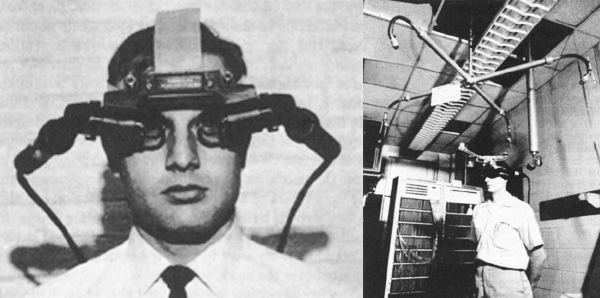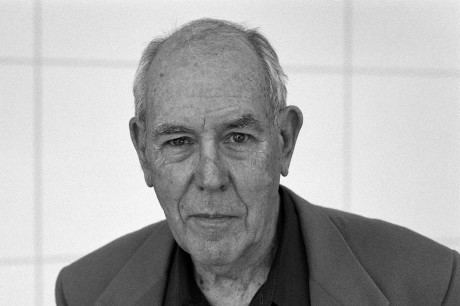Spouse Marly Roncken (m. 2006) | Name Ivan Sutherland | |
 | ||
Fields Computer scienceInternetComputer graphics Institutions Harvard UniversityUniversity of UtahEvans and SutherlandCalifornia Institute of TechnologyCarnegie Mellon UniversitySun MicrosystemsPortland State UniversityAdvanced Research Projects Agency (1964 - 1966) Alma mater MIT (Ph.D., 1963)Caltech (M.S., 1960)Carnegie Institute of Technology (B.S., 1959) Doctoral students Danny Cohen, Henri Gouraud, James H. Clark, Bui Tuong Phong, Franklin C. Crow, John Warnock, Robert P. Burton, Michael K. Ullner, Christopher R. Carroll Parents Dean Sutherland, Juliet Sutherland Similar People | ||
Sketchpad by Ivan Sutherland at Bay Area Computer History Perspectives 3 22 94 (VPRI 780)
Ivan Sutherland's Trojan Cockroach
Ivan Edward Sutherland (born May 16, 1938) is an American computer scientist and Internet pioneer, widely regarded as the "father of computer graphics." His early work in computer graphics as well as his teaching with David C. Evans in that subject at the University of Utah in the 1970s was pioneering in the field. Sutherland, Evans, and his students from that era invented several foundations of modern computer graphics. He received the Turing Award from the Association for Computing Machinery in 1988 for the invention of Sketchpad, an early predecessor to the sort of graphical user interface that has become ubiquitous in personal computers. He is a member of the National Academy of Engineering, as well as the National Academy of Sciences among many other major awards. In 2012 he was awarded the Kyoto Prize in Advanced Technology for "pioneering achievements in the development of computer graphics and interactive interfaces".
Contents
- Sketchpad by Ivan Sutherland at Bay Area Computer History Perspectives 3 22 94 VPRI 780
- Ivan Sutherlands Trojan Cockroach
- Biography
- Awards
- Quotes
- Patents
- Publications
- References

Biography

Sutherland earned his bachelor's degree in electrical engineering from the Carnegie Institute of Technology (now Carnegie Mellon University), his master's degree from Caltech, and his Ph.D. from MIT in EECS in 1963.

He invented Sketchpad in 1962 while at MIT. Professor Claude Shannon signed on to supervise Sutherland’s computer drawing Thesis. Among others on his thesis committee were Marvin Minsky and Steven Coons. Sketchpad was an innovative program that influenced alternative forms of interaction with computers. Sketchpad could accept constraints and specified relationships among segments and arcs, including the diameter of arcs. It could draw both horizontal and vertical lines and combine them into figures and shapes. Figures could be copied, moved, rotated, or resized, retaining their basic properties. Sketchpad also had the first window-drawing program and clipping algorithm, which allowed zooming. Sketchpad ran on the Lincoln TX-2 computer and influenced Douglas Engelbart's oN-Line System. Sketchpad, in turn, was influenced by the conceptual Memex as envisioned by Vannevar Bush in his influential paper "As We May Think".

Sutherland replaced J. C. R. Licklider as the head of the US Defense Department Advanced Research Project Agency's Information Processing Techniques Office (IPTO), when Licklider returned to MIT in 1964.
From 1965 to 1968, Sutherland was an Associate Professor of Electrical Engineering at Harvard University. Work with student Danny Cohen in 1967 led to the development of the Cohen–Sutherland computer graphics line clipping algorithm. In 1968, with the help of his student Bob Sproull, he created the first virtual reality and augmented reality head-mounted display system, named The Sword of Damocles.
From 1968 to 1974, Sutherland was a professor at the University of Utah. Among his students there were Alan Kay, inventor of the Smalltalk language, Henri Gouraud, who devised the Gouraud shading technique, Frank Crow, who went on to develop antialiasing methods, and Edwin Catmull, computer graphics scientist, co-founder of Pixar and now President of Walt Disney and Pixar Animation Studios.
In 1968 he co-founded Evans and Sutherland with his friend and colleague David C. Evans. The company has done pioneering work in the field of real-time hardware, accelerated 3D computer graphics, and printer languages. Former employees of Evans and Sutherland included the future founders of Adobe (John Warnock) and Silicon Graphics (Jim Clark).
From 1974 to 1978 he was the Fletcher Jones Professor of Computer science at California Institute of Technology, where he was the founding head of that school's Computer Science department. He then founded a consulting firm, Sutherland, Sproull and Associates, which was purchased by Sun Microsystems to form the seed of its research division, Sun Labs.
Sutherland was a Fellow and Vice President at Sun Microsystems. Sutherland was a visiting scholar in the Computer Science Division at University of California, Berkeley (Fall 2005–Spring 2008). On May 28, 2006, Ivan Sutherland married Marly Roncken. Sutherland and Marly Roncken are leading the research in Asynchronous Systems at Portland State University.
He has two children, Juliet and Dean, and four grandchildren, Belle, Robert, William and Rose. Ivan's elder brother, Bert Sutherland, is also a prominent computer science researcher.
Awards
Quotes
Patents
Sutherland has more than 60 patents, including:
